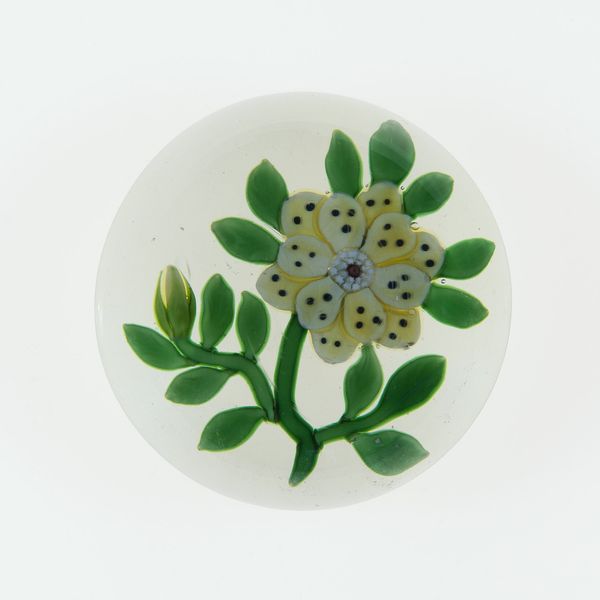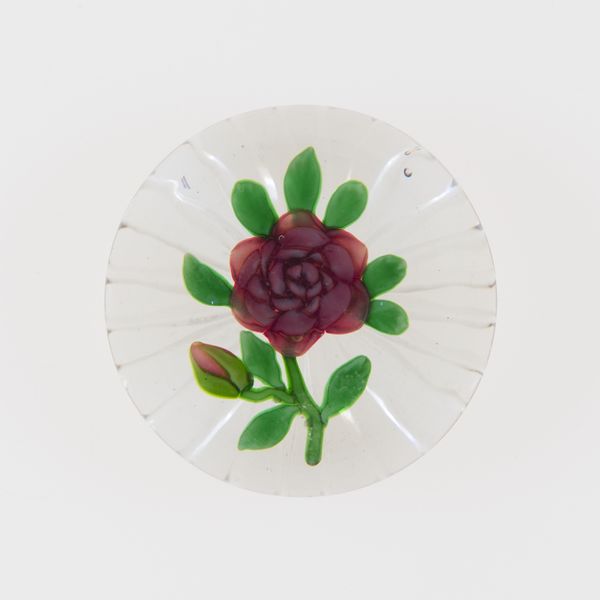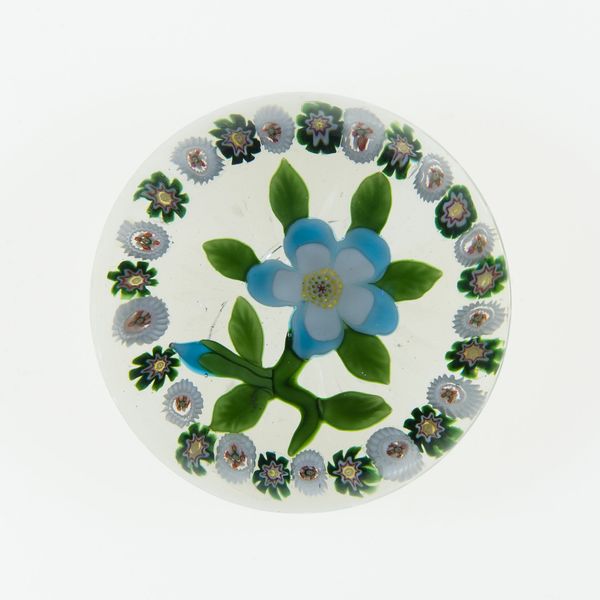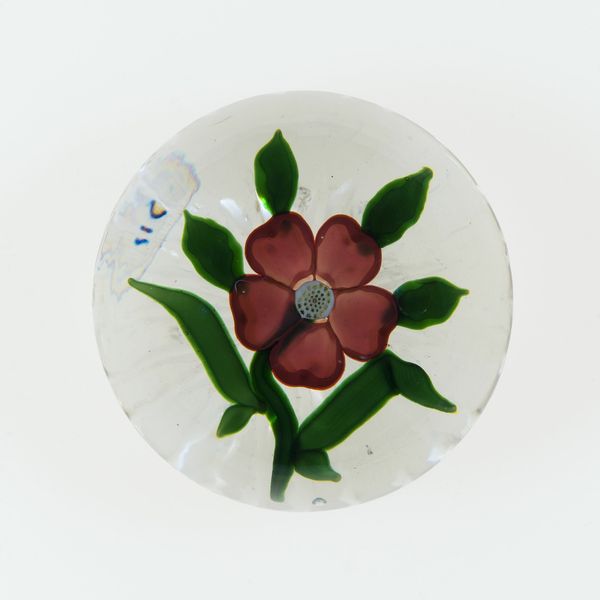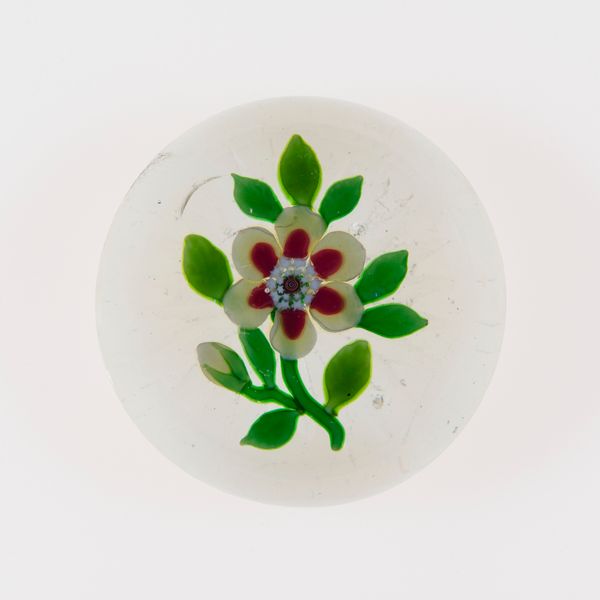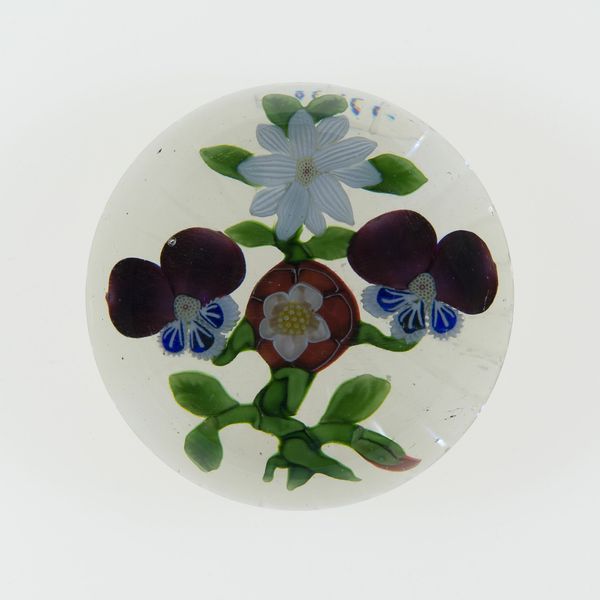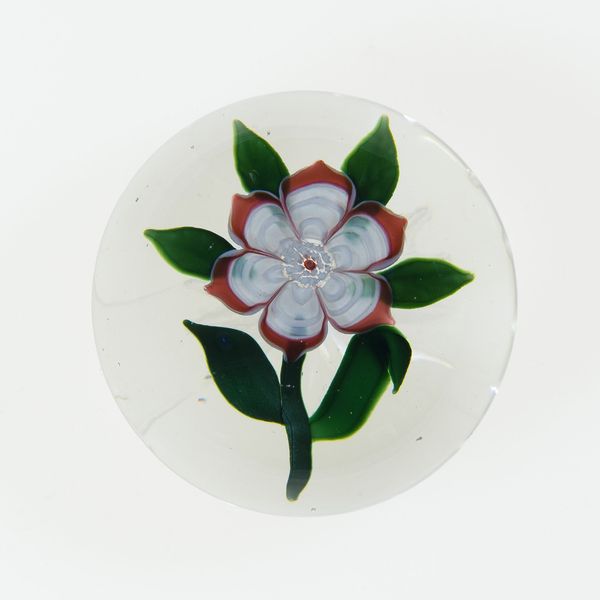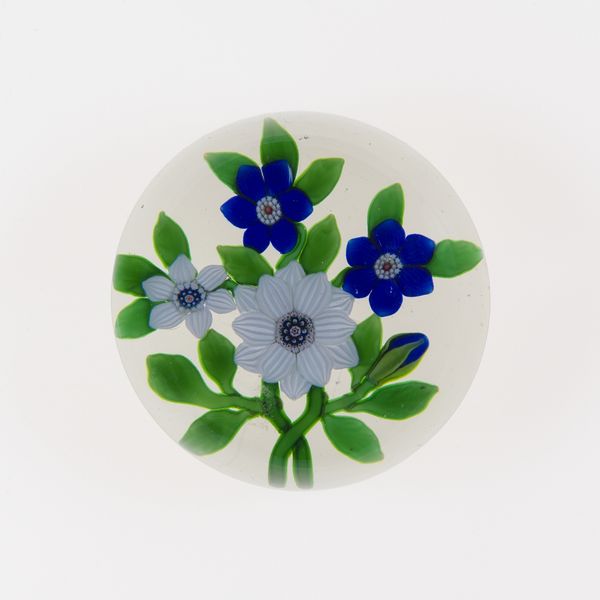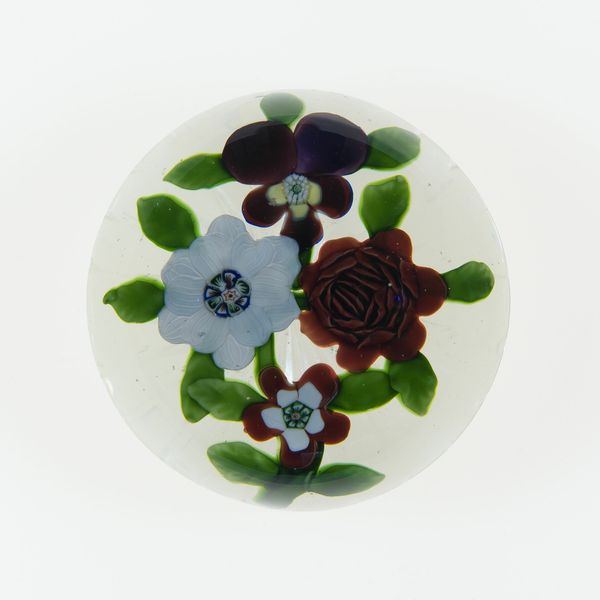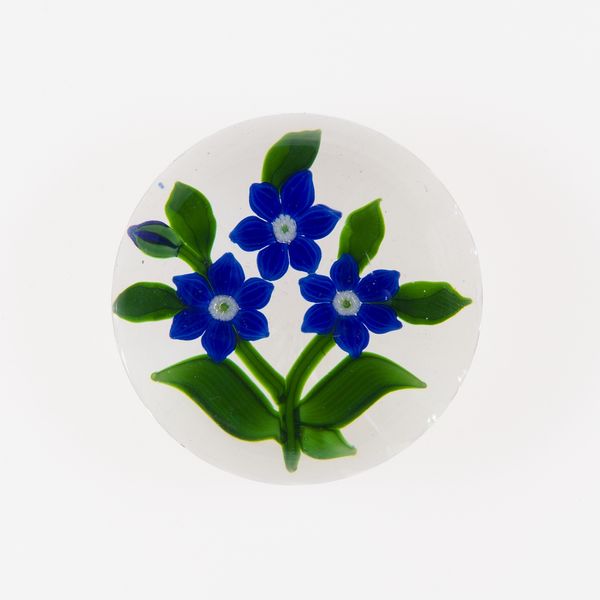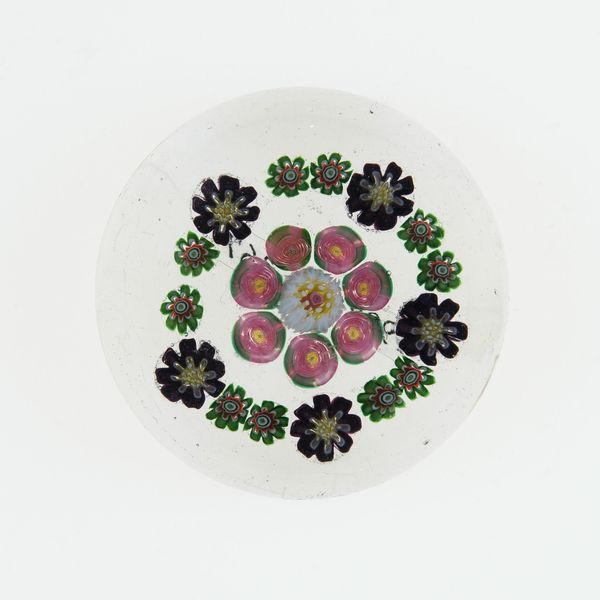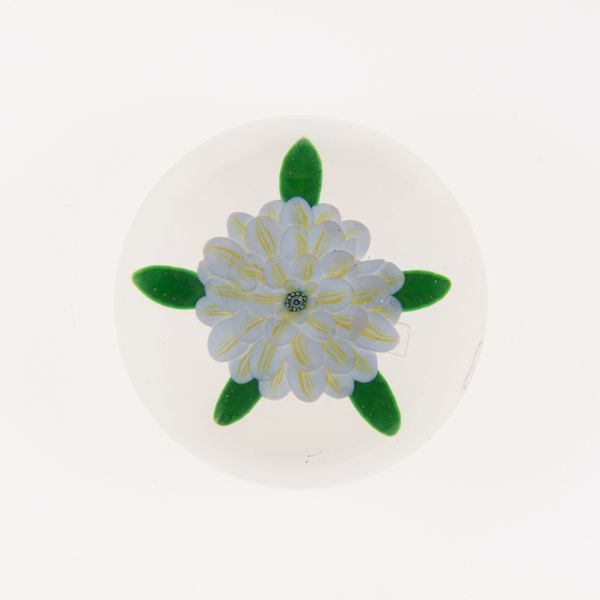
Dimensions: Diam. 7.6 cm (3 in.)
Copyright: Public Domain
Editor: Here we have a "Paperweight," made between 1845 and 1860 by Baccarat Glassworks, housed at The Art Institute of Chicago. It looks so delicate! The flower trapped inside seems almost suspended in time. I'm struck by how simple the composition is, yet the execution seems incredibly intricate. What stands out to you about it? Curator: The clear orb immediately presents a lens, not only for viewing, but for examining the very structure of the object. The floral motif, encased, is not merely decorative but functions as a carefully arranged interplay of forms. Note the concentric arrangement of the petals, and the rhythmic distribution of the spots, the balanced color palette—the vivid greens and soft yellows. Do you notice how the curvature of the glass distorts and refracts light, impacting depth perception of the elements within? Editor: Yes, the curve definitely makes it look more three-dimensional. It almost feels like looking into a tiny, contained world. It’s beautiful but almost clinical at the same time. Curator: Precisely. And this is not simply about "beauty." Consider how the materiality itself conveys meaning. The glass, clear and flawless, emphasizes purity and stasis, almost halting the natural process of the organic material that it is portraying: the flower. Does it speak to something about our human desire to control and preserve? Editor: That's a fascinating way to look at it. I was focusing on the aesthetic aspect, but thinking about the material and its properties gives it another dimension entirely. Curator: Indeed. The arrangement creates a dialogue between stasis and the potential for dynamism. It underscores the intrinsic visual tension embedded in this small objet d’art. Editor: I see that now. I'll never look at a paperweight the same way! Thanks. Curator: You’re most welcome; I have enjoyed sharing insights of the work’s qualities.
Comments
No comments
Be the first to comment and join the conversation on the ultimate creative platform.
